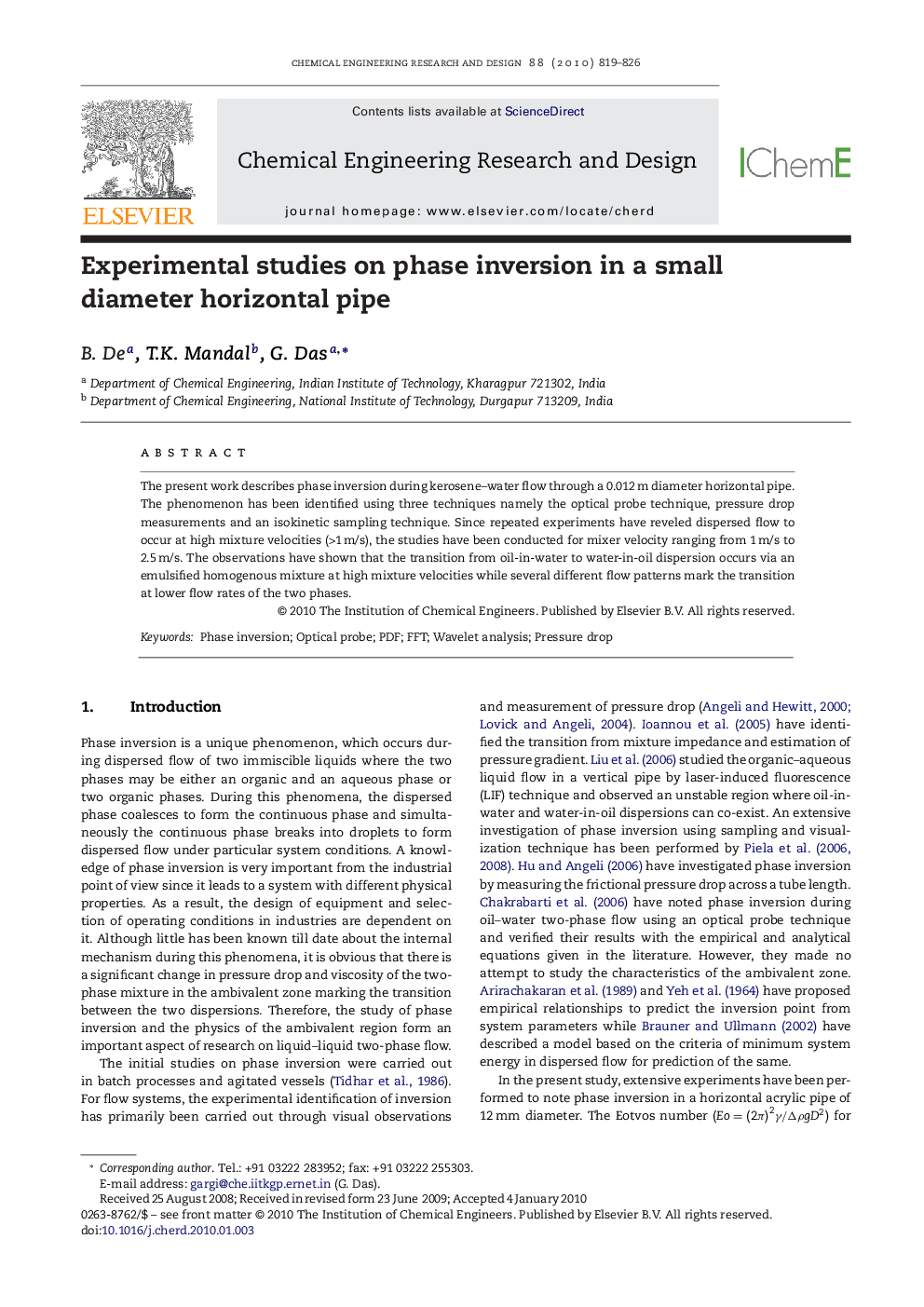| Article ID | Journal | Published Year | Pages | File Type |
|---|---|---|---|---|
| 622149 | Chemical Engineering Research and Design | 2010 | 8 Pages |
Abstract
The present work describes phase inversion during kerosene–water flow through a 0.012 m diameter horizontal pipe. The phenomenon has been identified using three techniques namely the optical probe technique, pressure drop measurements and an isokinetic sampling technique. Since repeated experiments have reveled dispersed flow to occur at high mixture velocities (>1 m/s), the studies have been conducted for mixer velocity ranging from 1 m/s to 2.5 m/s. The observations have shown that the transition from oil-in-water to water-in-oil dispersion occurs via an emulsified homogenous mixture at high mixture velocities while several different flow patterns mark the transition at lower flow rates of the two phases.
Related Topics
Physical Sciences and Engineering
Chemical Engineering
Filtration and Separation
Authors
B. De, T.K. Mandal, G. Das,
